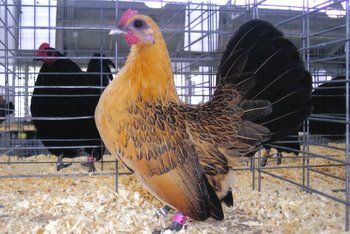Bill Grover
In the Brooder
- Apr 25, 2021
- 7
- 1
- 15
I was using a genotype from two authors. They said the Black Tailed Red was: eWh/eWh, Db/Db, Di/Di, Mh/Mh. After more than 7 years trying that the hens were *STILL* Not coloring up well. I have seen how Columbian will, so I'm adding that fourth gene. The first generation looks real promising.

